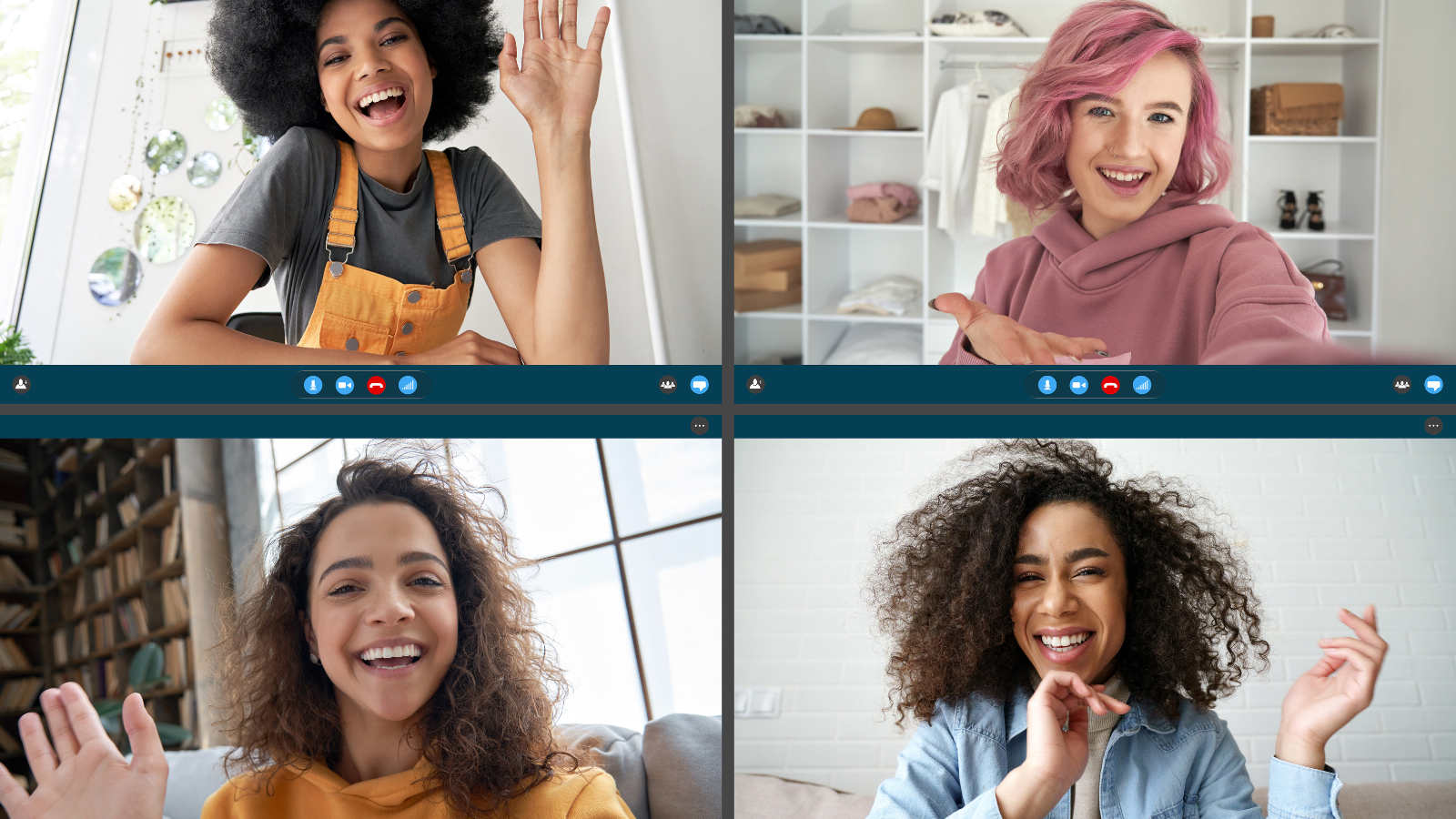Settlement Workers in Schools provide information, orientation, referrals and overall support to newcomer students and their families. Usually, Settlement Workers are assigned to various schools and have access to a laptop, internet stick, and a cellphone.
For Settlement Workers, being already mobile made the transition to remote work relatively easy when it came to one-on-one services. Clients needing information were able to reach workers mostly through phone and WhatsApp messaging. Group sessions in the other hand posed further challenges and had to be moved to online platforms.
Zoom: New Best Friend?
Like in other fields, many workers in the settlement sector embraced Zoom as a preferred tool to host group meetings. The advantages of Zoom included: the possibility of free accounts, meetings could host up to 250 participants, Zoom had easy screen-sharing capabilities and meetings could be accessed via phone or a computer. However, Zoom had many limitations as well, many of our newcomer clients were not tech savvy and getting used to the platform proved to be challenging; log-ins seemed to be especially problematic for many of our clients. Furthermore, using Zoom in a phone (very common among our clients) required downloading the app and creating an account, adding additional steps and possible complications for our clients. Finally, with the popularity of Zoom growing every day, security concerns also grew as many Zoom meetings were being hijacked.
Facebook Live
Though, we recognized the advantages of Zoom, other platforms needed to be explored. Facebook Live peeked our interested as it offered many advantages in terms of group sessions. Among some of the positive features, one of the most important ones were the popularity of the platform among our clients, being user-friendly and being interactive. Facebook also allows for Live session scheduling, facilitating promotion and outreach. Finally, if wanted, the live session could be recorded and shared to our newsfeed, so new clients could always find the information if required. Still, Facebook Live alone was not the answer, the biggest problem with Facebook live was that it only allowed one person to go live in one call, so the possibility of having guest speakers (specialists in a subject) will be out of the picture. In addition, going live on Facebook (or any platform) came with the risk of “technical difficulties”, therefore, the need for quality equipment and Wi Fi became a decisive factor.
Zoom Meets Facebook Live
After reviewing the advantages and disadvantages of both Zoom and Facebook Live, the answered appeared in the intersection of both. We realized we could have a winning combo combining both platforms. We could host our meetings on Zoom, having guest speakers if needed, and then, we could broadcast these zoom meetings to Facebook Live.
This idea was not totally original, Zoom already offered this service through the pay account. However, going Live from Zoom did not eliminated the risk that the meeting could be hijacked while broadcasting live. The solution? Bringing our Zoom meeting live from Facebook itself instead of Zoom. Using a second platform (Facebook) added an extra layer of security. Considering a hacker was to hijack our meeting, the few seconds delay on Facebook live potentially will give us the time to manage the situation. In order to do this, we needed 2 cameras, one for Facebook Live and a second one for the zoom meeting.
Once the tech part was finalized, it was important to decide on the format of the session. We chose an interview style over a presentation style for higher engagement. We also refrained from sharing screen, as we anticipated that many clients would watch the sessions on their phone and would not be able to read it. An engaged conversation with relevant information will be the hook to our audience. Finally, since our audience would be very diverse, we decided to provide general content interesting to many. We used our comment session, for individual questions and cases.
The results were great, the group sessions hosted on Zoom and broadcasted Live on Facebook reached thousands of views and increased engagement and the number of followers on our Facebook page. Using Facebook, gave us the opportunity to reach more clients, as the scheduled invitation to participate in the sessions could be shared by us and our co-workers in advance. Also, after the sessions were over, the video remained in our feed and could be watched or re-watched by anybody interested in doing so. Lastly, the sessions were a great tool to promote our organization and the services we provide to our clients.
The challenges of these model of sessions were among others, the need for better equipment to minimize the possibility of technical difficulties as well as having an excellent internet connection. Additionally, as with any type of media, the production time greatly exceeded the final product.
To conclude, these are some of the recommendations to host a Zoom meeting and broadcast it live on Facebook:
-
Use a dedicated zoom account
-
Test your equipment
-
Get familiar with the settings for Facebook live (camera, microphone, scheduling, audience, etc.)
-
Get familiar with your settings for your Zoom meeting (make sure you are familiar with the screen view Guest vs Gallery view, sound, video, share screen, etc.)
-
Share resources on the comments
-
A run through is a must. You can edit content, organize information in Q&A format, fix technical issues, help your guest presenter to feel more comfortable/confident
-
You will need a second person to monitor/moderate your comment session (Q&A)
-
Get your colleagues to help you with promotion
-
Be ready for technical difficulties, improvisation and problem-solving
-
Change and adjust as you go
